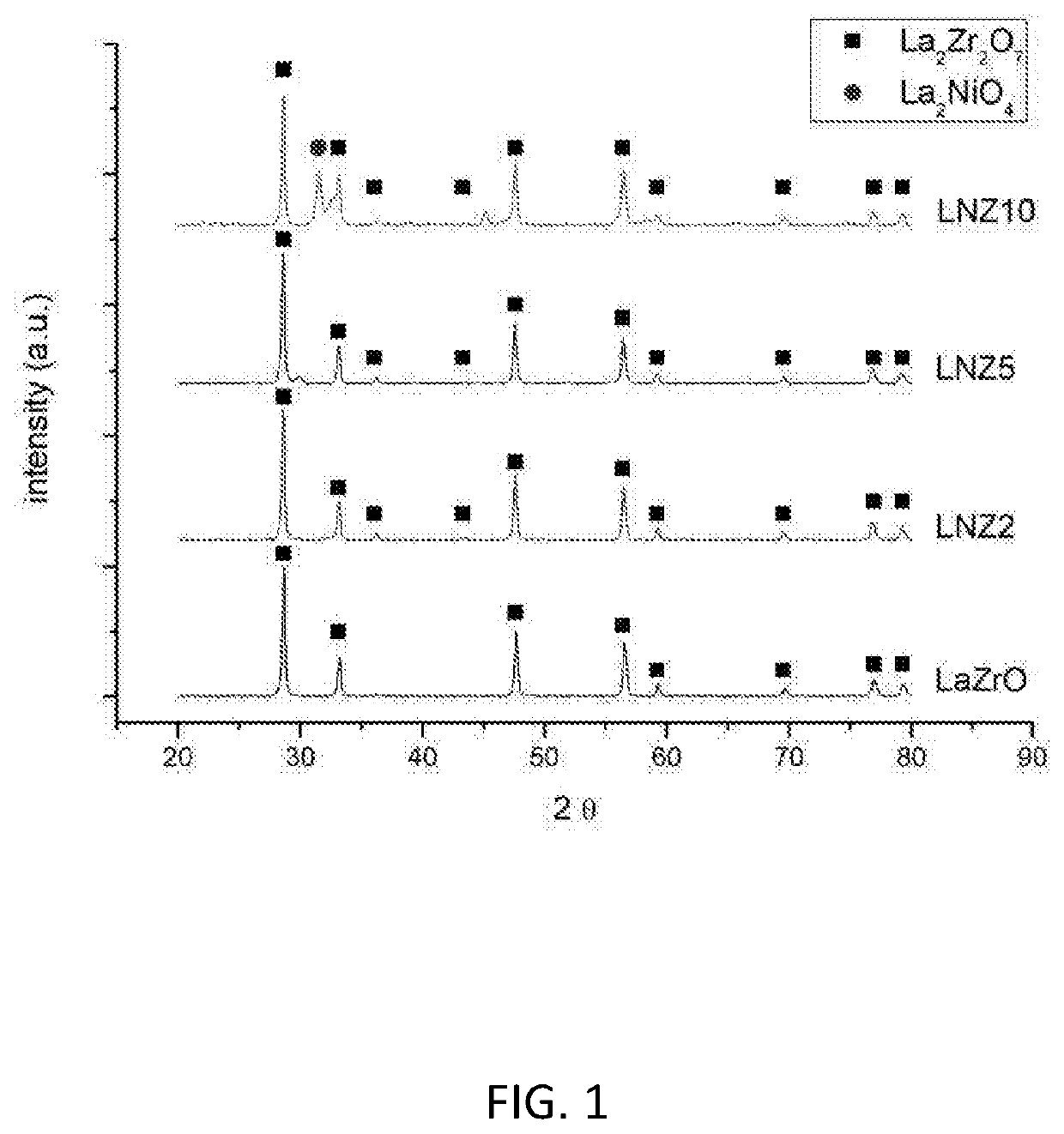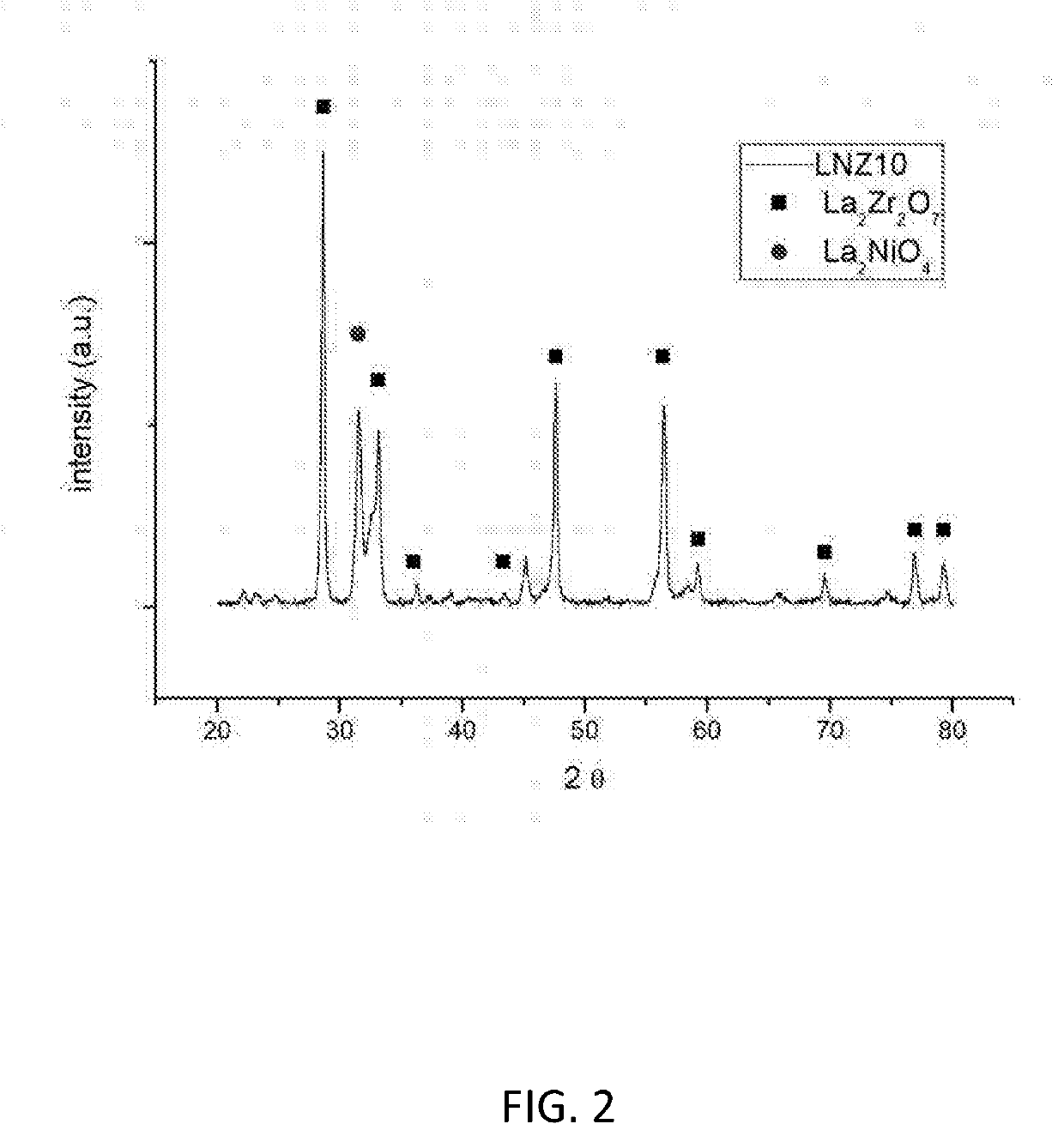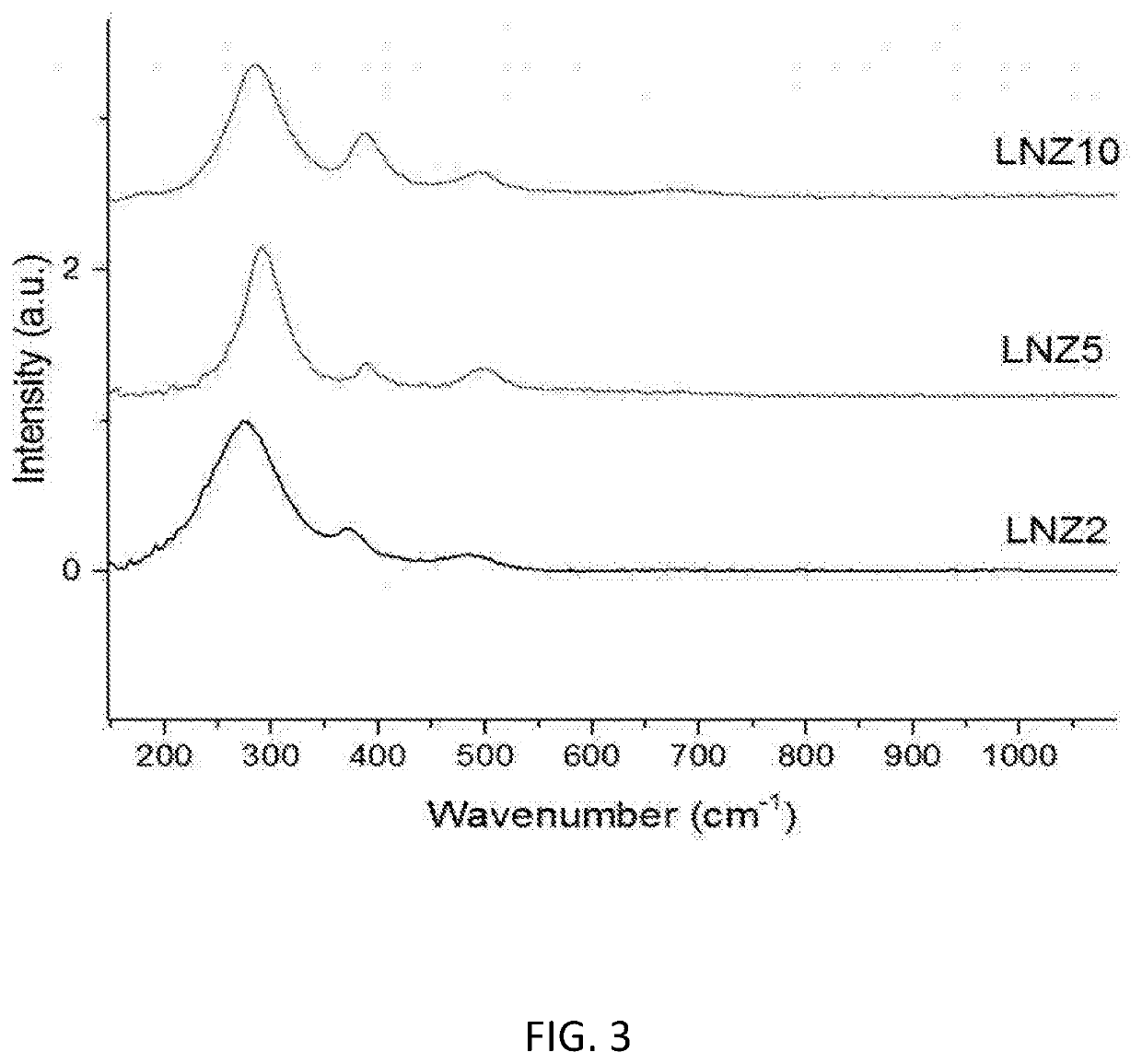Catalysts for the reforming of gaseous mixtures
a technology of catalysts and gaseous mixtures, applied in the direction of physical/chemical process catalysts, nickel compounds, metal/metal-oxide/metal-hydroxide catalysts, etc., can solve the problems of affecting the performance of current catalysts
- Summary
- Abstract
- Description
- Claims
- Application Information
AI Technical Summary
Benefits of technology
Problems solved by technology
Method used
Image
Examples
example 1
OF SOLID MIXED OXIDE MATERIALS
General Synthesis
[0126]The general protocol for preparing the pyrochlore-based solid mixed oxide materials is as follows: The precursors used for La, Ni, and Zr were lanthanum nitrate [La(NO3)3-6H2O], nickel nitrate [Ni(NO3)2-6H2O], and zirconyl nitrate [ZrO(NO3)2-6H2O], respectively. The necessary amount of nitrate salts were separately dissolved in deionized water and then mixed with a citric acid (CA) solution in a molar ratio of CA:metal=0.6:1. The solution was stirred for 10 min and concentrated in the rotary evaporator. The resulting mixture was transferred into a petri dish and dried at 100° C. under air overnight. The nitrate precursors started to decompose which was evident by NOx release. The resulting material was then crushed into a fine powder and calcined at 1000° C. for 8 h.
[0127]The pure pyrochlore La2Zr2O7 was prepared and labeled LaZrO for simplicity. A series of Ni-containing pyrochlore-based solid mixed oxide materials were then prep...
example 2
ISATION OF SOLID MIXED OXIDE MATERIALS
X-Ray Diffraction Analysis
[0132]FIG. 1 shows the X-ray diffraction pattern for LaZrO, LNZ2, LNZ5 and LNZ10. The pyrochlore crystalline phase (La2Zr2O7) is clearly present in all samples. At higher loadings of Ni (e.g. LNZ10), a second crystalline phase attributable to the Ruddlesden-Popper crystal structure is present.
[0133]FIG. 2 shows the X-ray diffraction pattern for reduced LNZ10. It is clear that both the pyrochlore crystalline phase and the Ruddlesden-Popper crystalline phase remain in the reduced sample.
[0134]FIG. 3 shows the Raman spectra of LNZ2, LNZ5 and LNZ10. It is clear that the Raman bands are sharp and ordered, indicating the presence of an ordered pyrochlore structure, rather than a disordered fluorite structure. The first intense peak corresponds to the Eg internal La—O stretching mode, with the other two peaks corresponding to the T2g modes of pyrochlore.
Scanning Electron Microscopy
[0135]FIG. 4 shows SEM image...
example 3
ACTIVITY TESTS
General Protocol
[0141]The catalytic activity tests were carried out in a ¼ inch continuous flow quartz reactor, at a pressure of 1 atmosphere and a CH4 / CO2 ratio of 1. Prior to the reaction the samples were activated in H2 / He during 1 h at 700° C.
Nickel Loading Effect
[0142]FIG. 7 shows the influence of metal loading (0-10 wt. %) on the catalytic activity and the stability of the reduced samples at 650° C. The activity is expressed in terms of CH4 conversion (FIG. 7(a)) and CO2 conversion (FIG. 7(b)). FIG. 7(c) displays the H2 / CO ratio, which gives an indication of the products distribution. It is observed that increasing the nickel loading of the catalyst results in an increase in both catalytic activity and stability. The lanthanum zirconate pyrochlore alone (LaZrO) and the 2% Ni sample (LNZ2) show no activity for dry reforming. In contrast, the 5% Ni sample (LNZ5) shows good catalytic activity. The 10% Ni sample (LNZ10) shows outstanding performance, being comparable...
PUM
| Property | Measurement | Unit |
|---|---|---|
| pore size | aaaaa | aaaaa |
| temperature | aaaaa | aaaaa |
| temperature | aaaaa | aaaaa |
Abstract
Description
Claims
Application Information
 Login to View More
Login to View More - R&D
- Intellectual Property
- Life Sciences
- Materials
- Tech Scout
- Unparalleled Data Quality
- Higher Quality Content
- 60% Fewer Hallucinations
Browse by: Latest US Patents, China's latest patents, Technical Efficacy Thesaurus, Application Domain, Technology Topic, Popular Technical Reports.
© 2025 PatSnap. All rights reserved.Legal|Privacy policy|Modern Slavery Act Transparency Statement|Sitemap|About US| Contact US: help@patsnap.com



